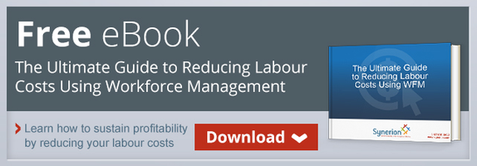 Everyone has been a victim to the same-old performance review. The employee and the manager both fill out their reviews separately and then sit down together for the annual review. Goals are set, never followed up on, and the cycle is repeated the next year. The performance review becomes a formality rather than a mechanism for change and growth. If you want to break out of that cycle and create a dynamic performance review system, start with these steps.
Everyone has been a victim to the same-old performance review. The employee and the manager both fill out their reviews separately and then sit down together for the annual review. Goals are set, never followed up on, and the cycle is repeated the next year. The performance review becomes a formality rather than a mechanism for change and growth. If you want to break out of that cycle and create a dynamic performance review system, start with these steps.
Make Sure Goals Matters
Lofty goals may be appropriate for board meetings and upper management, but for your workers, those goals can be frustrating and largely unachievable. Focus performance review parameters on straightforward and trackable data that is controllable by the employee or team. Prior to conducting your performance reviews, sit down with each employee to develop these goals so that you and your employee are on the same page. Talk about how you will track data and regularly provide updates on their progress. By making goals attainable and trackable, employees can truly excel.
Focus on the Positive
Performance reviews are often met with the same skepticism of a partner saying "We need to talk." Employees find performance reviews dwell on the negative such as why the employee will not be receiving a raise or where they fell short in the previous year. Make each performance review a compliment sandwich. Find at least two positive remarks for every one suggestion for improvement and sandwich that improvement in-between the compliments when talking to your employee. By emphasizing how the employee enhances business, employees are more receptive to change.
Meet Your Employees' Priorities
A fundamental problem with performance reviews is that they are employer-focused. While that doesn't sound like a bad deal from the employer, for the employee, it’s a one-sided relationship. Great managers know that to truly get the best results out of employees, they need to develop a symbiotic relationship. Talk with each employee to develop personalized performance review goals that match workplace needs with their personal needs. If the employee wants to return to school to attain a degree or branch out into more nuanced work, find ways to make that happen. Matching employee passion with company need is a simple way to create a more dynamic and meaningful employee performance review system.
Monthly Check-Ins
An annual performance review is as useful as getting a flu shot the week after you came down with the flu. Giving employee information they can no longer do anything about is demoralizing and bad for business. Regular check-ins to discuss performance review goals and progress is essential for employers and employees. Keeping those goals at the forefront of the conversation tells employees that performance review goals are important and gives them the information needed to meet those goals. Schedule monthly, ten minute meetings to speak to employees about their upcoming performance review and how they are meeting (or not meeting) their goals.
Sell the Review to Your Employees
What's more fun than a performance review? If your performance review process is standard fare, that list could include visits to the dentist, funerals, and watching paint dry. Shake up the performance review by treating it like you're trying to impress a new client. You need to keep them engaged. Use your workforce management system to develop graphics and charts to track employee progress and productivity within the company. Ask questions and give the company data that will reinforce employee goals. By truly focusing on the employee's performance in a meaningful way, you engage your employees and encourage them to improve through solid facts.
